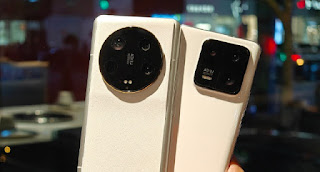Xiaomi is a brand that has taken the technology market by storm. The company has gained a reputation for manufacturing high-quality and affordable electronic products. One of the most popular products from Xiaomi is the Mi LED TV A2 50". This television has garnered a lot of attention due to its impressive features and affordable price tag. In this article, we will provide a detailed review of the Xiaomi Mi LED TV A2 50", including its specifications, features, and price.
Specifications
The Xiaomi Mi LED TV A2 50" is a Smart TV that comes with a 50-inch display. The display features 4K Ultra HD resolution and supports HDR content, ensuring that you get the best viewing experience. The TV has a refresh rate of 60Hz and a response time of 6.5ms. This ensures that fast-paced action sequences are displayed smoothly without any blurring.
The TV runs on Android TV 9.0 and is powered by a quad-core processor. It has 2GB of RAM and 16GB of internal storage. This allows you to download and install various apps and games without worrying about running out of space. The TV also supports Wi-Fi and Bluetooth connectivity, allowing you to connect to the internet and other devices.
Features
The Xiaomi Mi LED TV A2 50" comes with a plethora of features that enhance your viewing experience. One of the most notable features is the PatchWall 3.0 interface. This interface is designed to provide a personalized and intuitive viewing experience. It curates content based on your preferences and displays them in a clean and organized manner.
The TV also comes with Chromecast built-in. This allows you to stream content from your smartphone, tablet, or laptop directly to the TV. The TV also supports voice control through Google Assistant. You can control the TV using your voice, making it a convenient and hands-free experience.
Price
One of the most attractive aspects of the Xiaomi Mi LED TV A2 50" is its affordable price tag. The TV is priced at around $400, making it one of the most affordable 50-inch 4K Smart TVs in the market. This makes it a great option for anyone who wants to upgrade their viewing experience without breaking the bank.
Review
The Xiaomi Mi LED TV A2 50" is a great option for anyone who wants a high-quality Smart TV without spending too much money. The TV comes with impressive specifications and features that provide a great viewing experience. The 4K Ultra HD resolution and HDR support ensure that you get clear and vibrant visuals.
The PatchWall 3.0 interface is also a great feature that provides a personalized and intuitive viewing experience. The Chromecast built-in and Google Assistant support make it easy to stream content and control the TV using your voice.
Overall, the Xiaomi Mi LED TV A2 50" is a great Smart TV that provides excellent value for money. Its affordable price tag, combined with its impressive features, makes it a great option for anyone who wants a high-quality viewing experience without breaking the bank.



